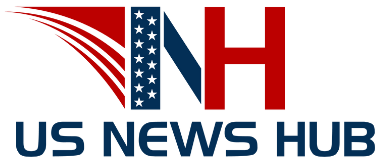Hong Kong has sold more foreign-exchange reserves to maintain its longstanding peg to the U.S. dollar, taking its total outlay this year to $7.24 billion.
The pressure on Hong Kong’s currency is part of turmoil across global foreign-exchange markets. The U.S. dollar has surged as investors adjust to a worsening economic outlook and brace for aggressive action by the U.S. Federal Reserve to bring decades-high inflation back under control. The Fed on Wednesday increased interest rates by the most since 1994.
In recent days, the Japanese yen has touched its lowest levels in 24 years against the dollar, while one broader measure of the U.S. currency’s strength, the WSJ Dollar Index, has advanced to its highest level since 2002.
Hong Kong’s currency has been tied to the U.S. dollar since 1983 and trades within a permitted range of 7.75 to 7.85 Hong Kong dollars per U.S. dollar. The city’s de facto central bank sells U.S. dollars if the local currency gets too weak or buys them if the Hong Kong dollar gets too strong.
This week, the city’s monetary authority sold $5 billion worth of U.S. currency holdings, a series of statements showed.
The Hong Kong Monetary Authority’s dollar sales this year have already surpassed its total from 2019, the last year when it had to sell reserves to shore up the local currency.
Measured in local-currency terms, the authority has sold more than HK$56.83 billion worth of U.S. dollars this year, versus HK$22.13 billion in 2019. It spent more than HK$103 billion during an earlier bout of Hong Kong dollar weakness that lasted from April to August 2018.
“Hong Kong’s monetary and financial markets continue to remain stable, despite the multiple rate hikes of the U.S., and the foreign-exchange market is operating in an orderly manner, with ample market liquidity,” HKMA Chief Executive
Eddie Yue
said at a briefing Thursday morning, after the monetary authority raised its own policy rate to 2%.
Christopher Hui, the city’s secretary for financial services, told legislators Wednesday that Hong Kong had abundant foreign-currency reserves. He said they amounted to more than $460 billion at the end of May, or roughly 1.7 times its monetary base.
The HKMA’s purchase of Hong Kong dollars will drain liquidity from the local financial system, helping to increase borrowing costs. Short-term interest rates in the city’s interbank lending market have lagged behind those in the U.S., making the Hong Kong dollar relatively less attractive.
The one-month Hong Kong Interbank Offered Rate, or Hibor, jumped 0.06 percentage point Thursday to 0.58%, its highest point since June 2020. The equivalent one-month London interbank offered rate for U.S.-dollar borrowing stood at 1.51%, according to FactSet.
Analysts have said the HKMA has the tools in place to maintain the peg, which they believe isn’t likely to break soon.
“The pace of intervention has not exceeded the level we saw in 2018,” when the U.S. also hiked interest rates, said Ju Wang, head of Greater China foreign-exchange and rates strategy at BNP Paribas.
While removing liquidity from the Hong Kong financial system is boosting Hibor, the rates still trail U.S. Libor, suggesting the Hong Kong banking system is “very, very flush” with funds, Ms. Wang said.
Write to Dave Sebastian at dave.sebastian@wsj.com
Copyright ©2022 Dow Jones & Company, Inc. All Rights Reserved. 87990cbe856818d5eddac44c7b1cdeb8

